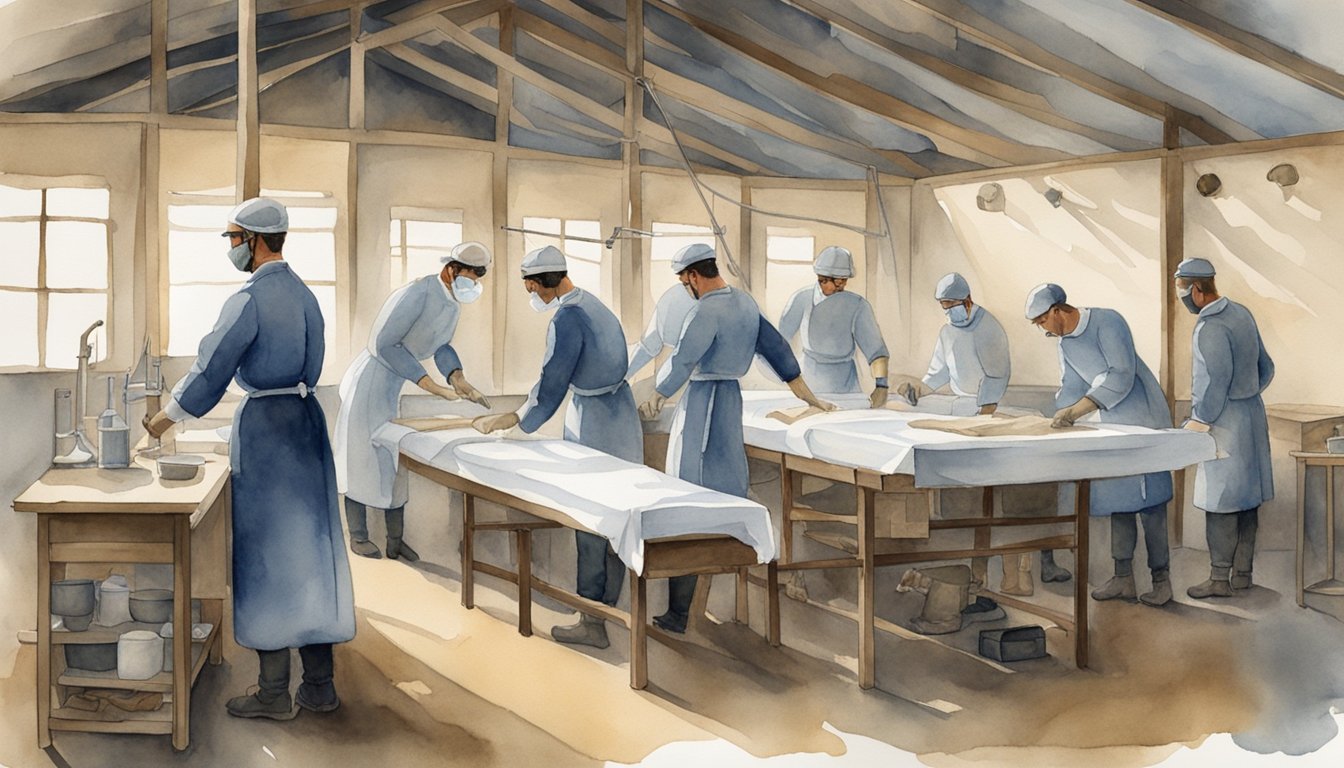The Birth of Modern Plastic Surgery

World War I catalyzed significant advancements in reconstructive procedures, particularly to address devastating facial injuries. This period saw the emergence of plastic surgery as a recognized medical specialty, with notable figures pioneering techniques that laid the groundwork for future surgical methods.
Pioneers of Reconstructive Procedures
One standout name in the history of plastic surgery is Sir Harold Gillies, a notable surgeon from New Zealand, who is often referred to as the “father of plastic surgery.” Gillies emphasized the importance of restoring both form and function, developing the revolutionary tube pedicle technique to transfer skin without losing its blood supply. Hippolyte Morestin and Varaztad Kazanjian also played crucial roles; the former’s work in jaw reconstruction and the latter for his outstanding skill in maxillofacial surgery.
The Importance of Facial Reconstruction
Face and jaw injuries were particularly common during WWI due to trench warfare, with many soldiers sustaining severe wounds that required innovative surgical solutions. The practice of facial reconstruction went beyond physical repair; it was crucial for patients’ psychological recovery and social reintegration. Henry Tonks’ clinical photography played a pivotal role in documenting these injuries and their treatment, providing valuable medical records and emphasizing the profound impact of these reconstructive efforts.
Sidcup: The Cradle of Plastic Surgery
In response to the increasing need for specialized care, the Queen Mary’s Hospital in Sidcup became a dedicated center for maxillofacial and plastic surgery. This facility became synonymous with the dawn of modern plastic surgery, offering unprecedented care and rehabilitation for soldiers with major deformities. Sidcup’s comprehensive approach, led by prominent figures like Gillies, established standards and methods that shaped the future of the surgical specialty.
Medical Challenges and Advances During WWI
The First World War was marked by devastating injuries and remarkable medical advancements. The conflict spurred innovation in treatment and recovery, reshaping modern surgery and medicine.
Treatment and Care in the Trenches
Life in the WWI trenches was perilous, with soldiers exposed to shrapnel and machine gun fire. Medical teams faced the daunting task of treating severe facial wounds and orthopaedic injuries in less-than-ideal conditions. Stretcher bearers braved the frontline to evacuate the injured to makeshift hospitals. Due to the somme of challenges, such as rampant infections and limited resources, maintaining hygiene and providing immediate care were critical for survival.
Innovations in Surgical Techniques
The brutal facial burns and trauma inflicted by shell blasts during battles like the Battle of Jutland led to pioneering work in maxillofacial surgery. Sir Harold Gillies and his team developed innovative techniques, such as the pedicle flap, which laid the groundwork for modern plastic and cosmetic surgery. Bone grafts were another significant advancement, helping repair shattered jaws and other skeletal damages. Anesthesia also saw improvements; the introduction of chloroform and ether through endotracheal tubes enabled more complex surgeries to take place without the risk of asphyxiation.
Psychological Impact and Post-War Recovery
The war’s impact extended beyond physical injuries; it also took a significant toll on the psychological well-being of soldiers. Occupational therapy emerged to aid in the recovery of airmen, sailors, and British soldiers, providing them with constructive activities that restored hope. Programs often included the use of mirrors as a means to rehabilitate those with severe facial scarring, helping them reintegrate socially. Walter Yeo, one of the first individuals to undergo advanced plastic surgery, symbolizes the hope for many WWI survivors to reclaim their lives after the war.
This chapter of medical history exhibits a time where necessity drove medical professionals to seek innovative solutions that would ultimately benefit future generations long after the First World War concluded.

